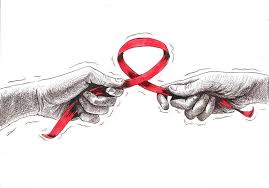How Is HIV Transmitted?
How HIV Is Transmitted and Prevented
What Is HIV and How It Spreads
HIV (Human Immunodeficiency Virus) is a virus that attacks the immune system and makes individuals more susceptible to other infections and diseases. HIV is primarily spread through direct contact with specific body fluids from a person with HIV who has a detectable viral load.
Body Fluids That Transmit HIV
HIV can be transmitted through the following fluids:
- Blood
- Semen and pre-seminal fluid
- Vaginal fluids
- Rectal fluids
- Breast milk
To infect an HIV-negative person, the virus must enter the bloodstream through:
- Mucous membranes (found in the vagina, rectum, penis, and mouth)
- Open cuts or sores
- Direct injection (e.g., using shared needles)
People living with HIV who take HIV medicine as prescribed and maintain an undetectable viral load cannot transmit the virus to their HIV-negative sexual partners.
How HIV Is Spread from Person to Person
HIV is transmitted through certain high-risk activities and behaviors. Below are the most common and less common ways HIV is spread.
Common Methods of HIV Transmission
- Unprotected vaginal or anal sex with someone who has HIV. Anal sex carries a higher risk than vaginal sex.
- Sharing needles, syringes, or other injection equipment with someone who has HIV.
Less Common Methods of HIV Transmission
- From mother to baby during pregnancy, childbirth, or breastfeeding.
- Needlestick injuries among healthcare workers (low risk).
Rare Methods of HIV Transmission
- Oral sex, if ejaculation occurs in the mouth and the partner has bleeding gums, sores, or other sexually transmitted infections.
- Blood transfusions or organ transplants with contaminated material (extremely rare due to modern screening procedures).
- Being bitten by a person with HIV, only in severe cases involving blood exchange.
- Deep, open-mouth kissing, but only if both partners have bleeding gums or open sores.
- Pre-chewed food from an HIV-positive caregiver to an infant (extremely rare and limited to specific cases).
HIV Viral Load and Transmission Risk
What Is HIV Viral Load?
Viral load refers to the amount of HIV in a person’s blood. HIV treatment (antiretroviral therapy or ART) can reduce viral load to undetectable levels, which prevents illness and transmission.
Undetectable = Untransmittable
- People with undetectable viral loads cannot transmit HIV to HIV-negative sexual partners.
- Most individuals on ART achieve viral suppression within six months.
- Regular HIV medication and doctor visits are necessary to maintain an undetectable status.
How HIV Is Not Spread
HIV cannot be transmitted through:
- Air or water
- Mosquitoes or insect bites
- Saliva, tears, sweat, urine, or feces (without blood)
- Shaking hands, hugging, or touching
- Sharing dishes, drinking glasses, or toilets
- Social kissing (closed-mouth)
- Donating blood
- Sexual activity that doesn’t involve fluid exchange (e.g., touching)
HIV does not pass through healthy, unbroken skin.
How AIDS Develops from HIV
What Is AIDS?
AIDS (Acquired Immunodeficiency Syndrome) is the most advanced stage of HIV infection. A person with untreated HIV may progress to AIDS over time, resulting in a severely weakened immune system.
How HIV Leads to AIDS
AIDS occurs when:
- The CD4 cell count drops below 200 cells/mm³
- A person develops opportunistic infections such as certain cancers or pneumonias
With early testing and consistent HIV treatment, most people with HIV do not develop AIDS.
HIV Prevention Methods
Pre-Exposure Prophylaxis (PrEP)
PrEP is a daily medicine that helps HIV-negative individuals avoid contracting HIV through sex or drug use.
Post-Exposure Prophylaxis (PEP)
PEP is a short-term treatment taken within 72 hours after potential exposure to HIV. It can prevent the virus from taking hold in the body.
Conclusion
HIV is preventable, treatable, and manageable. Knowing how HIV is transmitted—and how it is not transmitted—is crucial for both prevention and reducing stigma. People living with HIV who stay on medication and achieve an undetectable viral load can live full, healthy lives without spreading the virus.
If you think you’ve been exposed to HIV or want to get tested, contact your local health provider or visit the HIV Services Locator to find free or low-cost testing near you.
